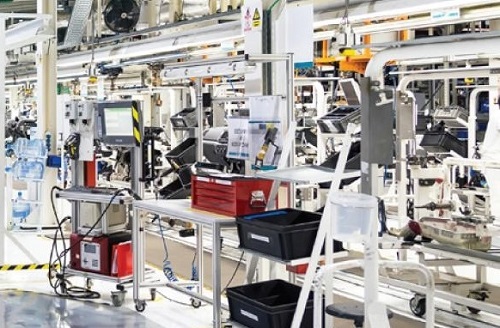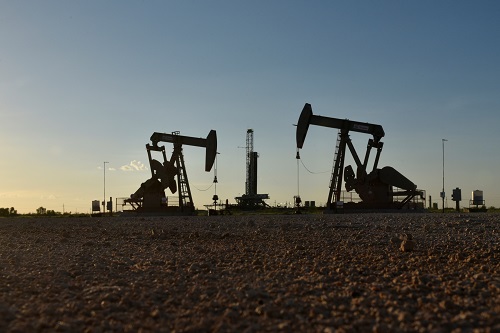Metal Sector Update By ICICI Securities

Follow us Now on Telegram ! Get daily 10 - 12 important updates on Business, Finance and Investment. Join our Telegram Channel
From Chinese stimulus and global restocking in CY20 to infra stimulus ex China in CY21 – has the supply squeeze run its course?
We hosted World Steel Association Director General Dr. Edwin Basson for a fireside chat. Few discussion points stand out. CY21 will be a moderate bull case in China with 3% steel demand growth out of the region as stimulus slows --- demand will be a story of two halves, with second half seeing the possibility of demand slowdown and increase in steel exports. He continues to harp (as he has been over the past 5 years) that export is not a goal but may be an outcome of temporary imbalances. Rest of the world (RoW) is expected to recover in CY21 driven by infra stimulus spending, yet Dr. Basson is of the opinion that structurally, the ability of the developed world to create demand-supply imbalance is behind us. The RM market squeeze is expected to correct progressively over the course of the year, perhaps post a blip-up in Q2CY21. As Chinese demand cools off, RoW is expected to normalise in CY21. Coronavirus pandemic in 2020 worked out to be much better than initially expected. As against the initial expectation of CY20 steel demand declining 6.5-7%, demand fell only 0.8%. China did extremely well in 2020 with 9% increase in steel use and 11% decline in RoW. What will 2021 look like? China will continue to grow. RoW will catch up. Dr. Basson expects 5% growth in steel demand in CY21, with 3% in China and 7% in RoW.
* China stimulus + global restocking helped supply squeeze in steel in CY20. The stimulus in China, which started in 2019, infra and housing development spooled over in 2020 as well. China also discovered itself as an industrial exporter of steel products as global supply chain was recovering. This was due to an efficient production planning within China and a lead-and-lag situation of global demand and supply chain recovery. Thus, while stimulus played a crucial role, global supply chain constraints also helped China export out industrial products allowing a 9% steel demand growth rate (despite sharp fall in net exports of steel).
* Interesting private construction trends seen across the world in CY20 – pick up in informal construction around the world in CY20. This collectively increased steel usage. This factor will disappear in CY21 and will be substituted by infrastructure programs driven by stimulus measures in developed economies.
* Receding role of Chinese stimulus to pick up steel demand from here on. Chinese government has started talking about incentivising different industries apart from steel. These, along with reduction in steel Co2 emissions target by 2030 and carbon neutrality targets by 2060, China may be embedded on a path to reduce steel intensity and help the industry become environmentally more efficient. Among short-term trends, in Q1CY21, there has been supply chain disruption that should normalise in Q2 and progressively over the course of the year.
* Exports for Chinese steel industry are not an objective in itself, but only a result of demand-supply imbalance. Process of replacement of SMS is on wherein old BF capacity will be replaced by new BF capacity at a swap ratio of 1:1. That rule is being changed to allow a swap of < 1 and 1:1 for EAF capacities. Availability of increasing scrap in China is a long-term trend as more BF to EAF transition is happening. Excess material availability of exports from China will not be alarming, while scrap availability out of China and reduced demand of iron ore in China will be medium-term trends to follow.
* SE Asia – Indonesia and Malaysia are seeing increasing investor interest for capacity creation. Hence, there is time to rethink of China being the only regional player in the export market. Interestingly, there was no mention of India being a regional export player.
* Developed world infra stimulus has limited steam to create structural demand-supply imbalance. For Europe and US, it’s confirmed that they have not gone back to the steel consumption before the financial crisis. In Europe, as expected, steel use is still down 25%, and in the US it is still at 90% of pre-financial crisis level. Similar trends are being seen in South America (at 93%) and Japan/South Korea (at 90%). Hence, even with an infra stimulus support from these countries, steel demand-supply balance will see a short-term adjustment, as focus remains on green sustainable growth, thereby, not increasing steel intensity significantly. While China will continue to be a strong player, +ive growth is likely in SE Asia, Middle East and Africa, with the axis of growth shifting again.
* Raw material adjustments to play out over the rest of the year post a squeeze in Q2CY21. Trade tensions between China and Australia, creating a squeeze on Chinese profitability, should hopefully get resolved given the interests of both the parties.
* Stainless steel market is structurally oversupplied. We briefly touched upon the subject of stainless steel being structurally oversupplied and lagging behind carbon steel market in finding its solutions on capacity. This has implications on nickel supply as well.
To Read Complete Report & Disclaimer Click Here
For More ICICI Securities Disclaimer https://www.icicisecurities.com/AboutUs.aspx?About=7
Above views are of the author and not of the website kindly read disclaimer












 320-x-100_uti_gold.jpg" alt="Advertisement">
320-x-100_uti_gold.jpg" alt="Advertisement">












